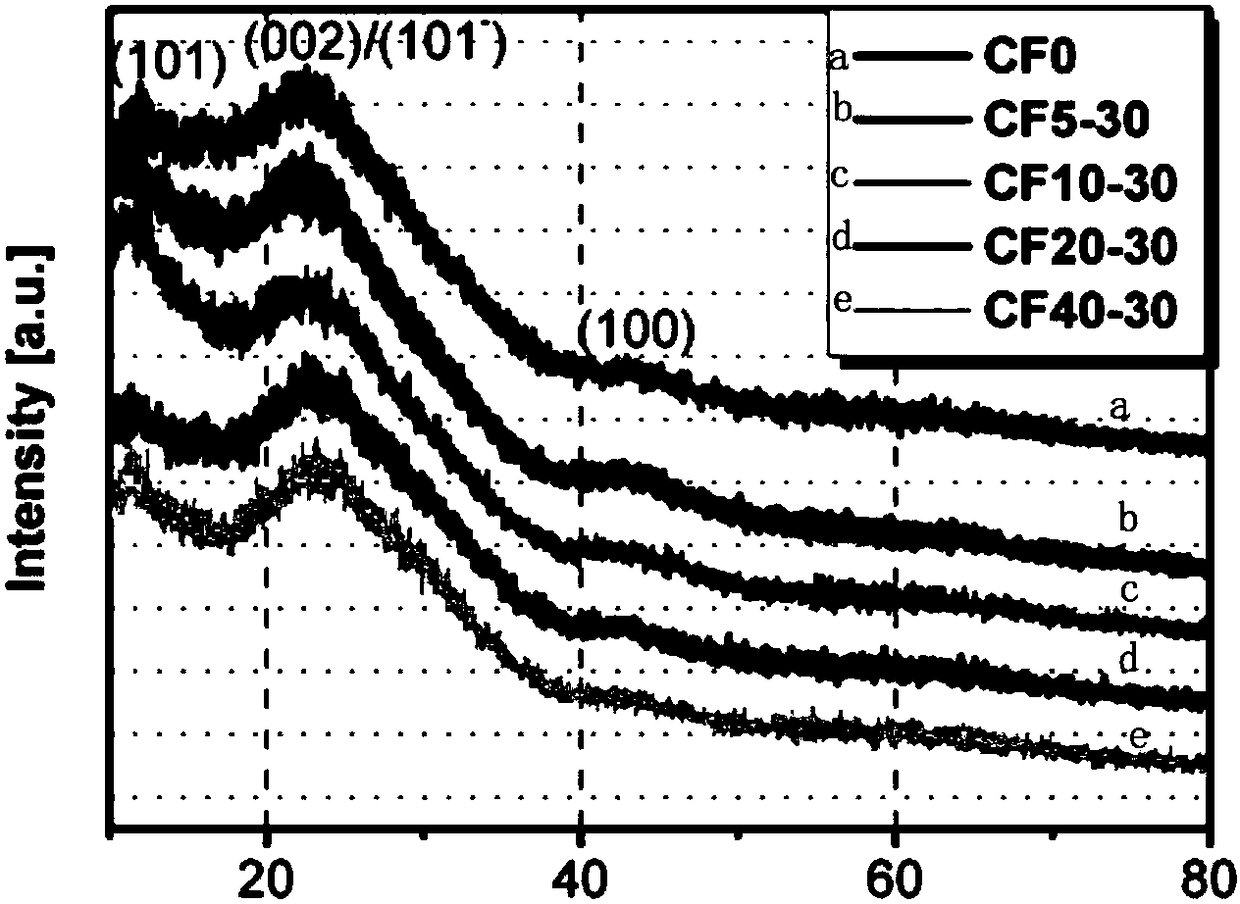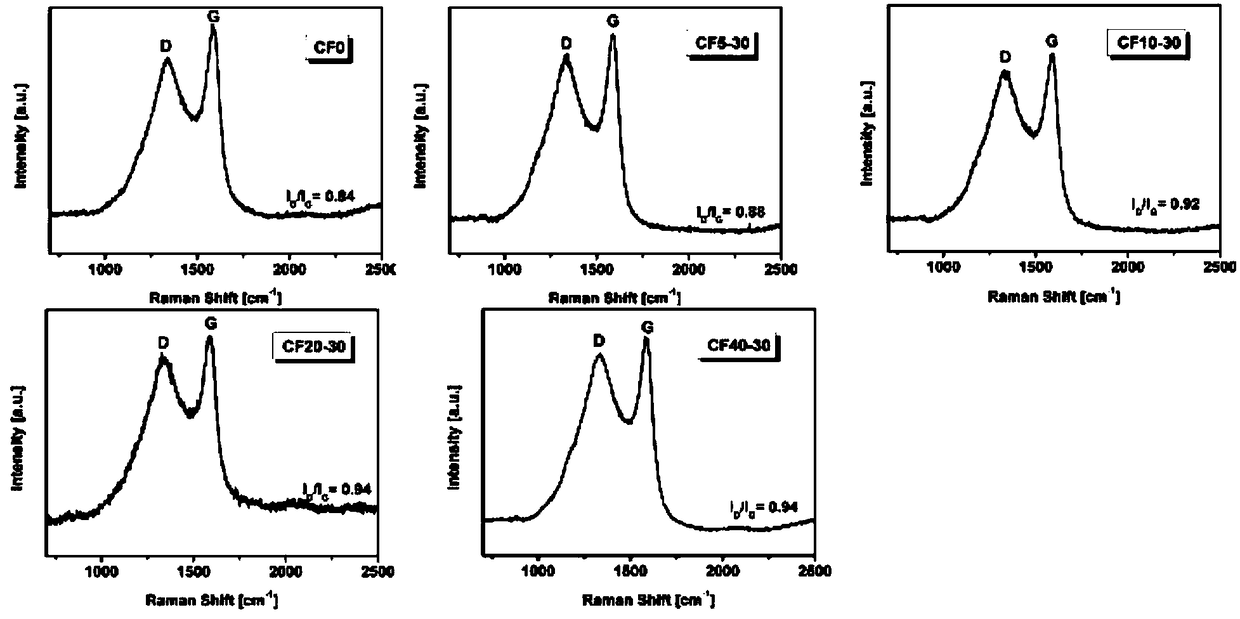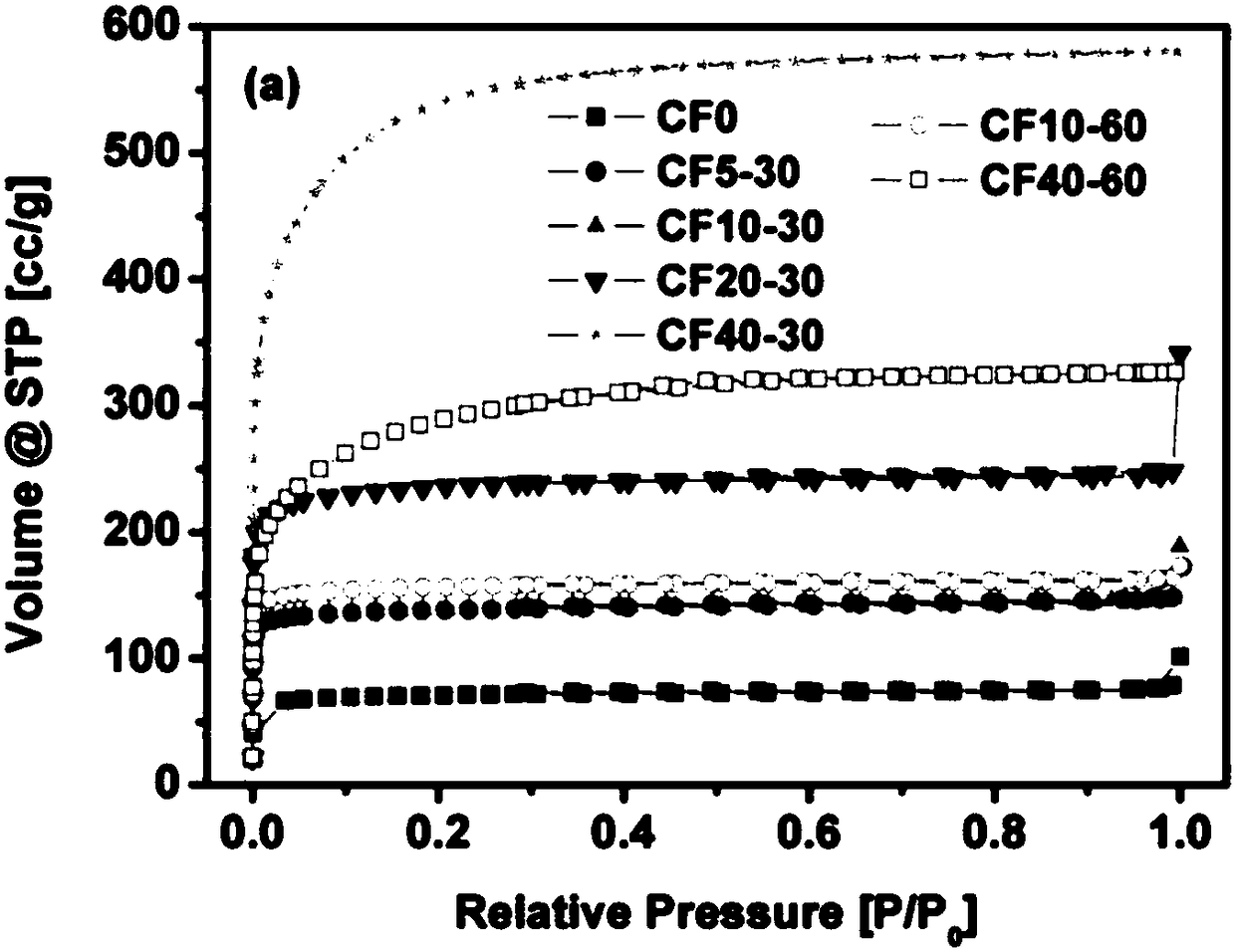Preparation method and application of porous carbon material
A technology of porous carbon materials and electrode materials, applied in the direction of hybrid capacitor electrodes, etc., can solve the problems of low specific capacitance, high manufacturing process cost, and single pore structure of supercapacitors, and achieve large specific surface area, rich pore structure, and wide application Effect
- Summary
- Abstract
- Description
- Claims
- Application Information
AI Technical Summary
Problems solved by technology
Method used
Image
Examples
Embodiment 1
[0028] Use 5wt% zinc chloride solution to soak the filter paper fiber (cellulose content 90%) for 30 minutes to partially dissolve the surface of the cellulose fiber, solidify it in deionized water for a while, and then put it into 650 ° C for drying Dry in box. The carbonization process was carried out in a vacuum tube furnace at 650°C, using argon as the protective atmosphere, and the carbonization time was 2 hours. After carbonization, a porous activated carbon material is obtained.
Embodiment 2
[0030] Use 10wt% zinc chloride solution to soak the filter paper fiber (90% cellulose content) for 30 minutes to partially dissolve the surface of the cellulose fiber. After solidifying in deionized water for a while, put it into 650°C for drying Dry in box. The carbonization process was carried out in a vacuum tube furnace at 650°C, using argon as the protective atmosphere, and the carbonization time was 2 hours. After carbonization, a porous activated carbon material is obtained.
Embodiment 3
[0032] Use 20wt% zinc chloride solution to soak the filter paper fiber (90% cellulose content) for 30 minutes to partially dissolve the surface of the cellulose fiber. After solidifying in deionized water for a while, put it into 650°C for drying Dry in box. The carbonization process was carried out in a vacuum tube furnace at 650°C, using argon as the protective atmosphere, and the carbonization time was 2 hours. After carbonization, a porous activated carbon material is obtained.
PUM
| Property | Measurement | Unit |
|---|---|---|
| Specific capacitance | aaaaa | aaaaa |
Abstract
Description
Claims
Application Information
 Login to view more
Login to view more - R&D Engineer
- R&D Manager
- IP Professional
- Industry Leading Data Capabilities
- Powerful AI technology
- Patent DNA Extraction
Browse by: Latest US Patents, China's latest patents, Technical Efficacy Thesaurus, Application Domain, Technology Topic.
© 2024 PatSnap. All rights reserved.Legal|Privacy policy|Modern Slavery Act Transparency Statement|Sitemap



